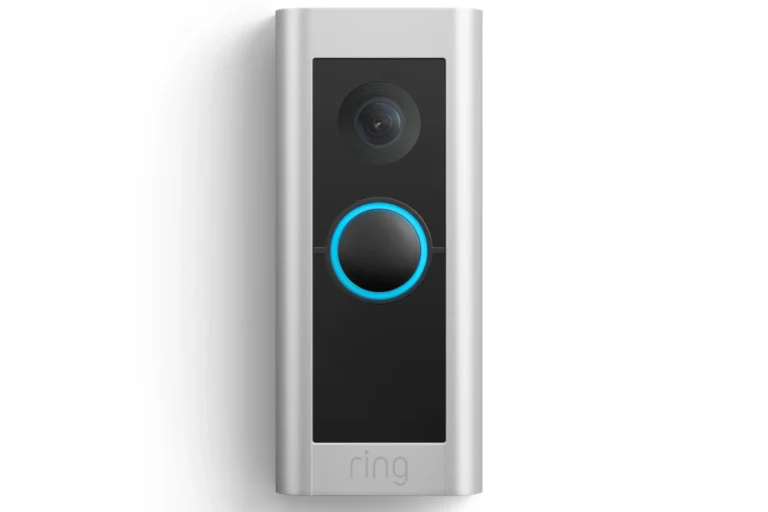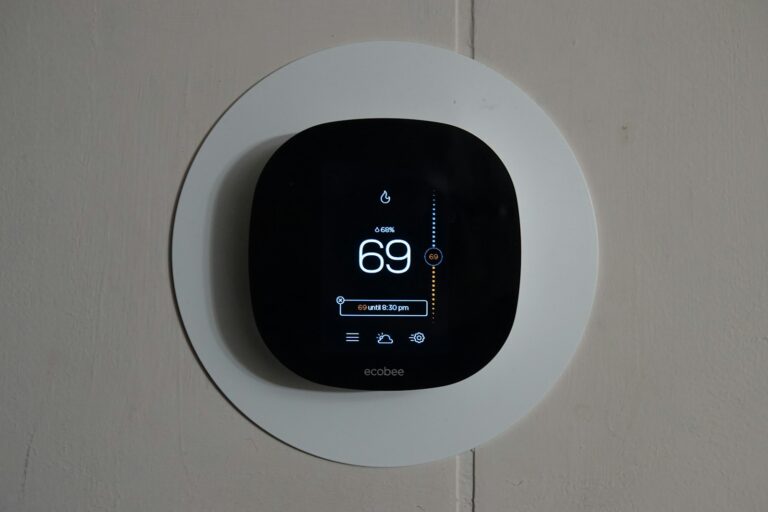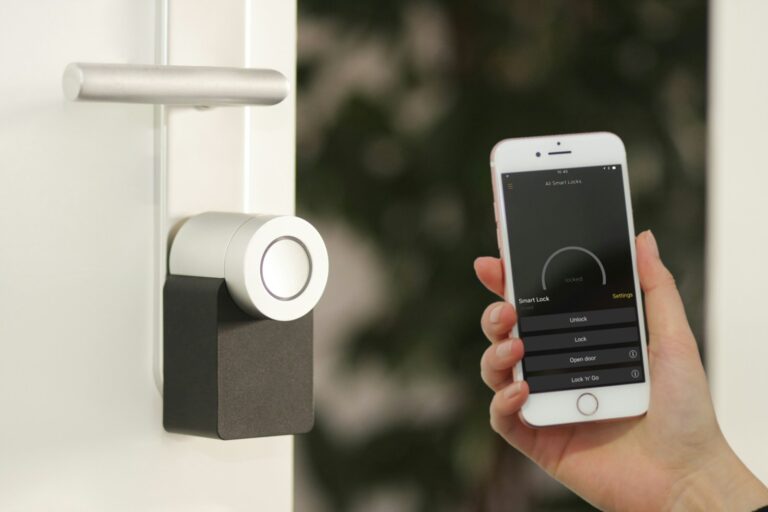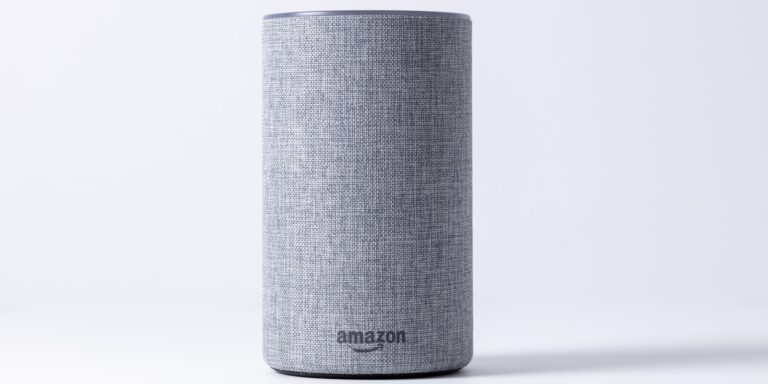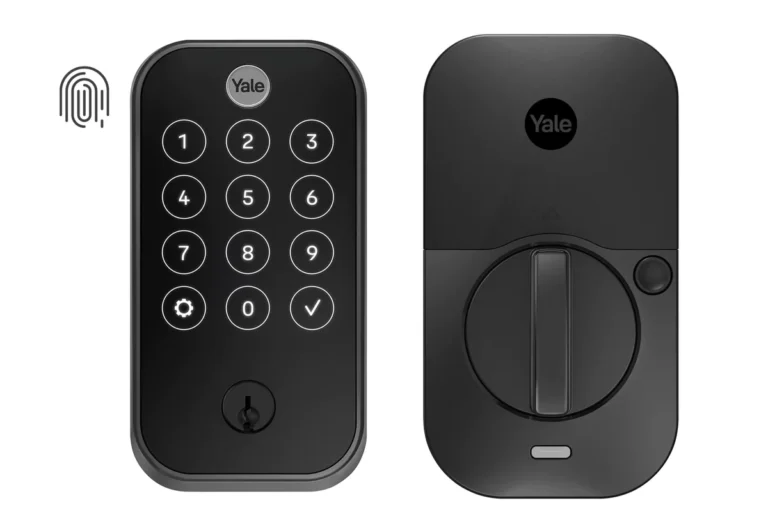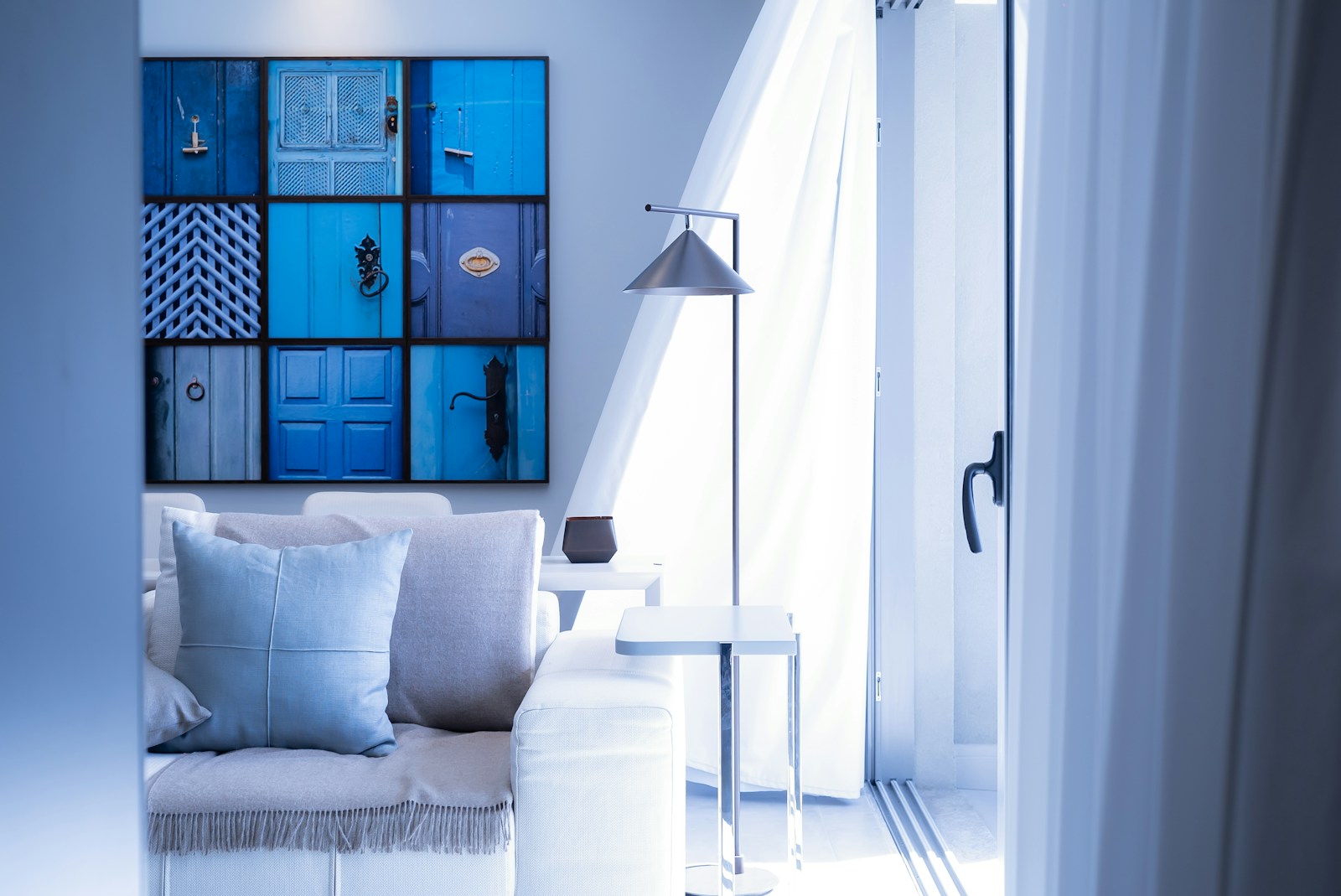
Living in a rental doesn’t mean you can’t enjoy the benefits of modern technology. With a few simple devices and some creative thinking, you can transform your apartment into a connected space that responds to your needs. Creating a smart apartment is easier than ever with affordable, renter-friendly devices that don’t require permanent installation or modifications to your space.
Many renters are surprised by how much they can automate without drilling holes or changing fixtures. Smart plugs are an excellent starting point, allowing you to control any device that plugs into the wall through your smartphone. Add in some Philips Hue lights or Ikea Tradfri bulbs that screw into existing fixtures, and suddenly your apartment responds to voice commands or scheduled routines.
The transformation doesn’t require a huge investment all at once. Many renters start with just one or two devices and gradually build their smart home ecosystem. A single smart plug in a convenient outlet connected to your Wi-Fi network can be the beginning of an apartment that works better for you.
Turn Your Apartment into a Smart Home
Smart home technology isn’t just for homeowners. Even if you live in a rental apartment, you can enjoy the convenience of smart lights, locks, thermostats, and voice assistants — all without making permanent changes.
This guide will show you how to transform your apartment into a smart home step by step.
1. Start with a Smart Hub or Voice Assistant
The easiest way to control your smart devices is with a voice assistant or hub.
- Amazon Alexa (Echo speakers, Echo Show)
- Google Assistant (Nest Hub, Nest Mini)
- Apple HomePod mini (works with Siri + HomeKit/Matter devices)
👉 Choose the one that matches the ecosystem you already use (iPhone → Siri/HomeKit, Android → Google, or Alexa for wide compatibility).
2. Smart Lighting (Easy & Renter-Friendly)
Lighting is the simplest upgrade for apartments — no rewiring needed.
- Smart Bulbs: Replace existing bulbs with Wi-Fi or Bluetooth bulbs (Philips Hue, Nanoleaf, Wyze).
- Smart Light Strips: Add under cabinets, behind TVs, or around furniture for ambiance.
- Smart Plugs: Turn regular lamps into smart lights.
Control them with your phone or voice, set schedules, or create “scenes” (e.g., “Movie Night” dims the lights automatically).
3. Smart Plugs & Power Strips
Smart plugs let you control any device that plugs into the wall.
- Turn on/off fans, coffee makers, or holiday lights remotely.
- Schedule appliances to save energy.
- Monitor energy usage (on select models).
Great for renters since they don’t require wiring.
4. Smart Locks & Security (No Drilling Needed)
You don’t have to replace your apartment’s deadbolt to get smart security.
- Smart Lock Overlays: Devices like August Smart Lock or SwitchBot Lock attach to your existing lock without altering it.
- Video Doorbells: Choose battery-powered options (Ring, Eufy, Google Nest) that mount with adhesive or removable brackets.
- Indoor Security Cameras: Plug-in cameras (Eufy, Arlo, Blink) provide peace of mind without permanent installation.
5. Smart Thermostats (Check with Your Landlord)
If your apartment has a standard thermostat, you may be able to swap it for a smart thermostat (Nest, Ecobee) — but always check with your landlord first.
If not allowed:
- Try smart radiator valves or portable smart heaters/AC units with Wi-Fi controls.
6. Smart Entertainment
Upgrade your living room with smart devices:
- Smart TV / Streaming Device: Apple TV, Amazon Fire TV Stick, Roku, or Google Chromecast.
- Smart Speakers: Multi-room audio with Sonos, Echo, or HomePod.
- Smart Remotes: Logitech Harmony (or app-based remotes) to control multiple devices.
7. Smart Home Automation
Once you have a few devices, connect them with automation:
- Routines: “Good Morning” → lights on, coffee maker starts, weather readout.
- Geofencing: Lights and AC turn off automatically when you leave.
- Scenes: “Movie Night” → TV on, lights dim, curtains close.
Most ecosystems (Alexa, Google, Apple Home) make this easy through their apps.
8. Budget-Friendly Smart Home Starter Kit
If you’re just beginning, here’s a simple starter setup:
- 2–3 smart bulbs
- 1 smart plug
- 1 smart speaker (Echo Dot, Nest Mini, or HomePod mini)
- 1 indoor camera
This setup costs under $200 and gives you a solid smart home foundation.
9. Tips for Renters
- Avoid drilling: Use adhesive mounts or removable brackets.
- Check compatibility: Look for Matter-certified devices (the new universal smart home standard).
- Take it with you: Choose gear that’s easy to uninstall when you move.
Final Take
Turning your apartment into a smart home is easier than ever in 2025. With smart bulbs, plugs, locks, and speakers, you can enjoy convenience, security, and energy savings — all without permanent changes.
Start small, build gradually, and soon your apartment will feel like the smart home of the future.
Key Takeaways
- Smart plugs and bulbs offer renter-friendly automation without permanent installation or landlord permission.
- Starting small with just one or two connected devices can provide immediate benefits while staying within budget.
- Voice control through smartphones and smart speakers creates a seamless experience that enhances daily apartment living.
Understanding Smart Home Basics
Before diving into smart home setup, it’s important to understand what makes a home “smart” and the technology behind it. Smart homes offer convenience through automation while connecting various devices throughout your living space.
What Is a Smart Home?
A smart home is a residence equipped with connected devices that allow remote monitoring and management of appliances and systems. These homes utilize internet connectivity to enable control through smartphones, tablets, or voice commands.
The core of any smart home is a central hub or system that connects and communicates with individual smart devices. Popular platforms include Amazon Alexa, Google Home, and Apple HomeKit.
Smart homes range from basic setups with a few connected bulbs to comprehensive systems controlling lighting, temperature, security, and entertainment. Even renters can create smart apartment solutions without permanent modifications.
The key feature is automation – devices working together to create routines that simplify daily tasks without manual intervention.
Advantages of Smart Home Automation
Convenience is the primary benefit of smart home technology. Residents can control multiple aspects of their living environment from anywhere using a smartphone or voice commands.
Energy efficiency improves as smart thermostats learn preferences and adjust temperatures automatically. Smart lighting systems turn off when rooms are empty, reducing electricity usage and lowering utility bills.
Enhanced security comes through connected doorbell cameras, smart locks, and motion sensors that send alerts to homeowners’ phones when unusual activity is detected.
For renters specifically, smart home technology offers:
- Portable solutions that move with you
- No need for permanent modifications
- Control via smartphone for temperature, lighting, and more
Many smart devices also collect data on usage patterns, helping residents optimize their home environments for comfort and efficiency.
Terminology and Technology Overview
Wi-Fi serves as the foundation for most smart home systems, connecting devices to the internet and each other. Some devices also use Bluetooth for direct device-to-device communication.
Smart home protocols determine how devices communicate:
- Zigbee and Z-Wave: Specialized wireless networks for home automation
- Matter: Newer standard aimed at unifying smart home ecosystems
- Thread: Low-power mesh networking protocol
Voice assistants like Amazon Alexa, Google Assistant, and Apple Siri provide natural language interfaces for controlling smart devices. Most beginner smart homes start with a smart speaker featuring one of these assistants.
Automation routines are scheduled or triggered sequences of actions performed by multiple devices. For example, a “Good Morning” routine might open blinds, adjust the thermostat, and start the coffee maker simultaneously.
When shopping for smart devices, compatibility with existing systems is crucial to ensure all components work together seamlessly.
Getting Started with Smart Home Conversion
Transforming a rental apartment into a connected home requires careful planning, understanding your specific needs, and selecting devices that work well together. The right approach can create a seamless smart experience without making permanent changes to your living space.
Assessing Your Needs
Start by identifying which aspects of your apartment would benefit most from smart technology. Consider your daily routines and pain points. Do you often forget to turn off lights? Would voice control for your entertainment system make life easier?
Make a list of your priorities. Common beginner areas include:
- Lighting control (smart bulbs or switches)
- Climate management (smart thermostats)
- Security monitoring (cameras or door sensors)
- Entertainment systems (smart speakers or TVs)
For renters, focus on non-permanent installations that can move with you. Plug and play options from Amazon, Google, or Apple offer simplicity without modification requirements.
Identify which rooms will benefit most from upgrades. Many people start with living areas and bedrooms where they spend the most time.
Setting a Budget
Smart home technology ranges widely in price. Establishing a clear budget prevents overspending while ensuring quality components.
Sample Budget Framework:
| Priority Level | Device Type | Budget Range |
|---|---|---|
| Essential | Smart Hub | $50-150 |
| Primary | Smart Lights (3-4 rooms) | $100-250 |
| Secondary | Smart Plugs (2-4) | $40-80 |
| Optional | Security Camera | $80-200 |
Consider starting with a modest investment in one area rather than trying to automate everything at once. This approach allows for testing before further expansion.
Many renters find smart plugs are a cost-effective starting point, instantly making regular appliances programmable without significant expense.
Allocate more budget to central components like quality hubs that will control multiple devices.
Selecting Compatible Devices
Device compatibility is crucial for a functioning smart home ecosystem. Before purchasing, decide which platform will serve as your foundation.
Popular smart home ecosystems include:
- Amazon Alexa
- Google Home
- Apple HomeKit
Choose one primary platform and stick with it for core devices. This prevents frustrating compatibility issues later. Check if devices are labeled “Works with…” your chosen platform.
For renters, prioritize wireless devices that don’t require hardwiring or permanent installation. Smart plugs connected to regular appliances create instant smart functionality without modifications.
Research which devices work together using manufacturer websites or by watching videos and reading blogs. This preparation prevents costly purchasing mistakes.
Consider future expansion when selecting your hub and initial devices. The right foundation makes adding new components simpler.
Smart Lighting Solutions
Smart lighting transforms an apartment into a modern, efficient living space. These systems offer convenience, energy savings, and the ability to create personalized atmospheres without permanent modifications to rental properties.
Choosing Smart Light Bulbs
When selecting smart bulbs, renters should consider connectivity options. WiFi bulbs connect directly to home networks, while Zigbee and Bluetooth options may require hubs.
Philips Hue remains a popular choice with excellent color quality and reliability, though at a premium price point. Budget-friendly alternatives from brands like Wyze and TP-Link offer basic functionality at lower costs.
Look for bulbs that offer:
- Compatibility with preferred voice assistants (Alexa, Google, HomeKit)
- Color temperature range (warm to cool white)
- Brightness levels (measured in lumens)
- Power consumption (lower wattage means energy savings)
Most smart bulbs work with existing lamps and fixtures, making them ideal for rentals where electrical modifications aren’t permitted.
Installing Smart Light Switches
For renters wanting more permanent solutions, smart switches can replace existing wall switches with landlord permission. These control all lights on a circuit rather than individual bulbs.
No-wiring options include switch covers that fit over existing switches. These mechanical devices physically toggle the switch beneath without electrical modifications. Brands like SwitchBot offer this technology.
Battery-powered smart switches can be mounted anywhere using adhesive strips. They work as remotes for smart bulbs or plugs without touching existing wiring.
Important considerations include:
- Neutral wire requirements (many rentals lack these)
- Switch dimensions fitting existing wall plates
- Battery life for wireless options
- Compatibility with existing bulbs
Always check lease agreements before installing any wired solutions in an apartment.
Creating Ambiance with Lighting
Smart lighting systems excel at creating customized atmospheres for different activities and moods. Color-changing bulbs allow tenants to transform spaces without paint or permanent fixtures.
Preset “scenes” can be programmed for various activities:
- Movie night: Dimmed lights with subtle blue tones
- Dinner parties: Warm amber lighting at medium brightness
- Reading: Bright, cool white focused on specific areas
- Relaxation: Soft purples or warm reds at low intensity
Motion sensors can trigger hallway lighting at night, improving safety without wasting energy. Light strips installed under cabinets or behind furniture create dramatic effects and indirect lighting.
Scheduling features adjust lighting based on time of day, simulating natural light patterns. This helps maintain healthy circadian rhythms and can make spaces feel larger and more open.
Smart Climate Control
Taking charge of your apartment’s temperature has never been easier with modern smart climate solutions. These devices help save energy while keeping your home comfortable year-round.
Smart Thermostats for Energy Efficiency
Smart thermostats represent one of the most impactful smart home upgrades for apartment dwellers. These devices learn household routines and adjust heating and cooling automatically to save energy.
Popular options like Nest thermostats can reduce energy bills by 10-15% by optimizing temperature settings when residents are away. Many models connect to smartphones, allowing remote temperature adjustments before arriving home.
Installation is generally straightforward in most apartments. Many landlords approve these upgrades since they’re easily removable when moving out. Some energy companies even offer rebates for installing energy-efficient smart thermostats.
Key features to look for include:
- Motion sensors that detect when people are home
- Geofencing capabilities that adjust temperatures based on residents’ locations
- Energy usage reports that help track consumption patterns
Integrating Heating and Cooling Systems
Connecting heating and cooling systems to a smart home hub creates a comprehensive climate control solution. Voice commands through smart assistants allow residents to adjust temperatures without lifting a finger.
Smart climate systems can integrate with other devices like smart blinds or fans to maintain ideal temperatures. For example, blinds can automatically close during the hottest part of the day to reduce cooling costs.
For renters with window AC units, smart plugs offer a simple solution. By connecting window units to smart plugs, residents gain scheduling capabilities and remote control through smartphone apps.
Temperature sensors placed throughout the apartment help eliminate hot and cold spots. These sensors communicate with the main thermostat to create balanced comfort in every room.
Home Entertainment Systems
Home entertainment forms the heart of a modern smart apartment, combining convenience with immersive experiences. These systems can transform how you enjoy media while integrating seamlessly with other smart devices.
Smart Speakers and Voice Control
Smart speakers serve as command centers for apartment entertainment systems. The Amazon Echo lineup offers various options for different room sizes, with the compact Echo Dot perfect for bedrooms while the full-sized Echo delivers richer sound for living areas.
For superior audio quality, Sonos speakers provide premium sound while integrating with Alexa or Google Assistant. They create multi-room audio systems without requiring any permanent installation.
Voice control transforms how residents interact with entertainment. Simple commands like “Alexa, play jazz music” or “Hey Google, turn on the TV” eliminate the need for multiple remotes.
Many smart speakers can also control other connected devices like lights and thermostats, making them central hubs for the entire apartment’s smart functions.
Setting Up Smart Displays and Streaming
Smart displays add visual elements to voice assistants. The Google Nest Hub and Echo Show allow users to watch videos, follow recipes, or make video calls directly from kitchen counters or nightstands.
For TV streaming, devices like Chromecast and Fire TV Stick transform regular televisions into smart entertainment centers without permanent installation. These plug-and-play solutions are perfect for renters.
Setting up these devices typically requires:
- Stable Wi-Fi connection
- Power outlet access
- Companion smartphone app
Streaming devices can connect multiple services (Netflix, Hulu, Spotify) into one interface, controlled by voice or smartphone. This eliminates the need for cable installation while providing more content options.
Many smart displays also function as digital photo frames and can serve as control panels for other smart home devices throughout the apartment.
Smart Security Features
Security is a top priority for any apartment dweller. Modern smart technology makes it easier than ever to protect your living space without making permanent changes that might violate your lease agreement.
Installing Smart Locks and Security Cameras
Smart locks offer keyless entry to apartments, which eliminates worries about lost keys or having to make copies for friends and family. Many models simply replace the interior portion of the existing deadbolt, making them perfect for rentals.
When choosing a smart lock, look for options that work with standard doors and don’t require drilling. Popular features include:
- Keypad entry
- Smartphone control
- Temporary access codes for visitors
- Auto-lock capabilities
For monitoring, indoor security cameras provide peace of mind when residents are away. These Wi-Fi connected devices send alerts when detecting movement and allow remote viewing through smartphone apps.
Place cameras in main living areas and entrances. Many models offer two-way communication, allowing residents to speak to pets or unexpected visitors even when not at home.
Adding Video Doorbells and Motion Sensors
Video doorbells function as both security devices and convenience tools. They allow residents to see and speak with visitors without opening the door. Many apartment-friendly options can be installed without permanent modifications.
Some video doorbell models use existing doorbell wiring, while others run on batteries. Key features to consider include:
- Night vision capabilities
- Motion detection zones
- Cloud storage for recordings
- Integration with other smart devices
Motion sensors enhance security by detecting unexpected movement. These small devices can be placed discreetly throughout the apartment and programmed to trigger lights or send alerts.
Motion sensors work particularly well in entryways, hallways, and near windows. They can also help automatically turn on lights when someone enters a room.
Monitoring Systems and Leak Sensors
Comprehensive monitoring systems combine multiple security elements into one manageable platform. Most apartment-friendly systems operate wirelessly and don’t require professional installation.
These systems typically include a central hub that connects to:
- Door/window sensors
- Motion detectors
- Emergency buttons
- Smartphone alerts
Leak sensors are often overlooked but equally important security features. These small devices detect water leaks early, potentially saving thousands in property damage.
Place leak sensors near washing machines, dishwashers, sinks, and water heaters. When moisture is detected, they send immediate alerts to smartphones, allowing quick response before minor leaks become major problems.
Many systems allow residents to monitor multiple sensors through a single app, making it easy to keep track of both security threats and potential water damage.
Smart Home Connectivity
Connecting devices is the foundation of any smart apartment setup. The right connectivity options ensure all your gadgets work together seamlessly, creating a truly automated living space.
Choosing a Smart Hub or Controller
Smart hubs serve as the central brain of your connected home, allowing different devices to communicate with each other. For renters, wireless hubs like Samsung SmartThings or Amazon Echo devices offer flexibility and easy installation without permanent modifications.
When selecting a hub, consider the protocols it supports. Popular options include:
- Zigbee and Z-Wave: Reliable mesh networks that work well even when your Wi-Fi is down
- Wi-Fi: Common in many smart devices, doesn’t require additional hardware
- Bluetooth: Good for direct device control
Budget-conscious renters might start with a smart speaker with built-in hub capabilities, which offers voice control and device management in one package.
Networking and Internet of Things (IoT)
A strong Wi-Fi network forms the backbone of any smart apartment. Position your router centrally, and consider mesh Wi-Fi systems for larger apartments with dead zones.
Most smart devices connect directly to your home network, so bandwidth becomes important as you add more gadgets. Typical requirements include:
| Device Type | Bandwidth Needed | Connection Type |
|---|---|---|
| Smart Lights | Low | Wi-Fi/Zigbee |
| Security Cameras | High | Wi-Fi |
| Smart Speakers | Medium | Wi-Fi |
For automation between devices, IFTTT (If This Then That) creates custom connections. For example, you can program lights to turn on when your smart lock detects you’ve arrived home.
Remember to secure your network with strong passwords and regular firmware updates to protect your connected devices.
Compatibility with Amazon Alexa and Google Assistant
Voice assistants transform how you interact with your smart apartment, offering hands-free control of connected devices. Both Amazon Alexa and Google Assistant support thousands of smart products, but compatibility varies.
Alexa excels with its extensive smart home device integration and Skill marketplace. Google Assistant often provides more natural conversation and better answers to general questions.
Key considerations when choosing your ecosystem:
- Existing devices: Check if your current tech favors one assistant
- Preferred services: Google integrates seamlessly with Gmail, Calendar, etc.
- Smart home brands: Some work better with specific assistants
Multi-platform devices like WiZ smart bulbs work with both assistants, giving renters flexibility. For maximum compatibility, look for products that support both major voice platforms rather than committing to a single ecosystem.
Enhancing Convenience with Automation
Home automation transforms everyday living by putting control at your fingertips. Smart technology eliminates repetitive tasks and creates a more comfortable environment that adapts to your lifestyle.
Automating Daily Tasks with Smart Plugs
Smart plugs offer an affordable entry point into home automation without requiring complex installation. These small devices plug into existing outlets and allow you to control non-smart appliances remotely through a smartphone app.
With smart home automation, residents can schedule coffee makers to brew automatically each morning or set lamps to turn on before arriving home. Many smart plugs also offer energy monitoring capabilities, tracking electricity usage and identifying energy-hungry devices.
For apartment dwellers with limited modification options, smart plugs provide automation without permanent changes. Simply plug in, connect to WiFi, and enjoy immediate convenience.
Popular models like the TP-Link Kasa or Wyze Plug offer:
- Remote on/off functionality
- Energy usage tracking
- Voice assistant compatibility
- Timer and schedule settings
Scheduling and Remote Access
The ability to create personalized schedules transforms apartment living. Automated routines eliminate the need to manually adjust settings throughout the day.
Morning routines can gradually raise smart blinds and increase thermostat temperatures. Evening modes might dim lights and lock doors with a single command. These schedules run automatically, requiring no daily input.
Remote access adds another layer of convenience by allowing control from anywhere. Forgot to turn off the bedroom light? No problem—just open the app.
This feature proves especially valuable when away from home for extended periods. Residents can adjust settings, monitor energy usage, and even simulate occupancy by randomly turning lights on and off for security purposes.
Integration with Existing Appliances
Many apartments come with standard appliances that lack smart capabilities. Fortunately, various solutions exist to integrate these existing devices into a smart home ecosystem.
Smart apartment technologies now work seamlessly with conventional appliances. For example, smart IR blasters can control air conditioners and televisions that use infrared remotes.
Smart hubs serve as central command centers, connecting different brands and protocols. This eliminates the need for multiple apps and creates a unified control experience.
Even major appliances can join the network:
- Refrigerators (via temperature monitors)
- Washing machines (through smart plugs with vibration detection)
- Ovens (using aftermarket smart controllers)
These integrations extend the lifespan of existing appliances while adding modern convenience features without replacement costs.
Advanced Smart Home Features
Taking your apartment automation to the next level means exploring technologies that save time and energy while creating a more comfortable living environment. These advanced features can transform daily routines into seamless experiences that work quietly in the background.
Robotic Vacuum Cleaners
Robot vacuums have evolved significantly in recent years, becoming essential smart home devices for busy apartment dwellers. Modern models use advanced mapping technology to learn floor plans and navigate around furniture efficiently.
Many high-end robot vacuums now feature:
- Self-emptying dustbins
- Mopping capabilities alongside vacuuming
- Voice control through Alexa, Google Assistant, or Siri
- Scheduled cleaning through smartphone apps
- No-go zones to avoid specific areas
The integration with other smart devices allows for automated cleaning routines. For example, the vacuum can start when everyone leaves the apartment, detected by smart locks or location services.
Battery life has also improved, with most units handling an entire apartment on a single charge. For renters, robot vacuums are ideal as they require no permanent installation or modifications to the property.
Smart Gardening and Outdoor Automation
Even apartment dwellers with small balconies or patios can benefit from smart gardening technology. Automated watering systems with moisture sensors ensure plants receive the right amount of water at optimal times.
Smart planters monitor:
- Soil moisture levels
- Sunlight exposure
- Temperature conditions
- Nutrient requirements
These systems connect to home automation networks and can be controlled remotely via smartphone apps. Weather-responsive features adjust watering schedules based on local forecast data, preventing overwatering during rainy periods.
LED grow lights with automated timers help indoor plants thrive in apartments with limited natural light. Some systems even send notifications when plants need attention or fertilizer.
For outdoor spaces, smart lighting with motion sensors enhances security while creating ambiance for evening relaxation. These lights can be programmed to follow specific schedules or activate based on sunset times.
Frequently Asked Questions
Many apartment dwellers have questions about implementing smart home technology without violating lease agreements or making permanent changes. These practical solutions can transform rental living with minimal installation requirements.
What are the best renter-friendly smart devices for an apartment?
Smart plugs and portable smart speakers are excellent starting points for renters since they require no installation. Devices like Amazon Echo or Google Nest Hub work well in apartments.
Smart light bulbs that screw into existing fixtures offer customizable lighting without rewiring. These can be controlled via smartphone apps or voice commands.
Wireless security cameras with temporary mounting solutions provide peace of mind without damaging walls. Look for battery-operated doorbell cameras that attach with removable adhesive strips.
How can smart home technology be implemented in a rental property?
Tenants should review their lease agreements before installing any smart devices. Many landlords allow non-permanent modifications that can be reversed when moving out.
Use removable mounting solutions like command strips or tension rods to hang smart displays or mount lightweight cameras. These leave no damage when removed properly.
Consider hub-based systems that centralize control without requiring wall installations. A single hub can manage multiple devices while sitting on a shelf or counter.
Are there cost-effective solutions for adding smart features to an apartment?
Start with multi-functional devices that serve several purposes to maximize value. A smart speaker can control other devices, play music, and answer questions.
Look for starter kits that bundle compatible devices at a lower price than purchasing separately. Many manufacturers offer apartment-friendly packages.
Energy-saving smart thermostats can often pay for themselves through reduced utility bills. Some utility companies even offer rebates for installing energy-efficient smart devices.
What steps are involved in transitioning to a fully smart apartment?
Begin by assessing WiFi coverage throughout the apartment. Smart devices require reliable internet connectivity to function properly.
Choose a primary voice assistant ecosystem (Google, Amazon, or Apple) before purchasing devices. This ensures compatibility between different smart products.
Implement devices room by room rather than all at once. This methodical approach helps troubleshoot issues and manage costs more effectively.
Which smart home gadgets are compatible with apartment living without permanent installation?
Portable smart thermostats that don’t require replacing existing units are ideal for renters. These devices work with your current HVAC system without modification.
Bluetooth or WiFi-enabled smart locks that fit over existing deadbolts preserve the original hardware. These add keyless entry without changing the door mechanism.
Smart curtain motors that clip onto existing curtain rods automate window coverings without installation. They can be programmed for privacy and energy efficiency.
What should I consider before installing smart home devices in a rented apartment?
Document the original condition of the apartment before making any changes. Take photos of areas where smart devices will be installed.
Consult with property management about specific smart home upgrades. Some landlords may actually welcome certain improvements like smart smoke detectors.
Plan for device removal when the lease ends. Keep original fixtures and hardware to restore the apartment to its original condition when moving out.
Consider privacy implications of voice-activated and camera-equipped devices in smaller living spaces. Adjust privacy settings accordingly.


